Article by: Asst. Prof. Suwan Juntiwasarakij, Ph.D., Senior Editor MEGA Tech Magazine
ในภาวะที่โลกเคลื่อนที่เข้าสู่กระบวนทัศน์เศรษฐกิจดิจิทัล ความซับซ้อนของระบบโลจิสติกส์การขนส่งก็เพิ่มขึ้นตามไปด้วย จึงเป็นเรื่องยากที่ภาคธุรกิจจะเข้าใจการเปลี่ยนแปลงและตั้งตัวรวมถึงตั้งเป้าขององค์กรได้ทันท่วงที เมื่อไม่นานมานี้ระบบ Smart Sensor ได้มีบทบาทสำคัญในระบบนิเวศโลจิสติกส์
เซ็นเซอร์ที่กล่าวถึงนี้ หมายถึง อุปกรณ์ที่ส่งข้อมูลโดยมีลักษณะเป็นสัญญาณที่ตรวจจับได้ ซึ่งมาจากกระบวนการทางกายภาพและสสาร ซึ่งสัญญาณที่ตรวจจับได้นี้มีความต่อเนื่องและสามารถหาค่าได้เสมอ ความแตกต่างของ Smart Sensor ขึ้นอยู่กับตัวแพลตฟอร์มและเทคโนโลยีที่เลือกใช้ ยกตัวอย่างเช่น ตัวประมวลผลไมโครโพรเซสเซอร์ หน่วยเก็บข้อมูล ลักษณะการทำงาน และลักษณะการเชื่อมต่อ ซึ่งจะเปลี่ยนสัญญาณที่ตรวจจับได้ให้เป็นข้อมูลดิจิทัลที่มีประโยชน์ใช้งานได้ คุณสมบัติของ Smart Sensor เหล่านี้เป็นขุมพลังอันสำคัญที่เพื่อไปสู่บทสรุปการวิเคราะห์เพื่อผลักดันพัฒนาการไม่ว่าจะเป็นทางด้านต้นทุน สมรรถภาพ หรือแม้กระทั่งประสบการณ์ผู้บริโภค

Source: Using Smart Sensors to Drive Supply Chain Innovation, Deloitte
SMART SENSOR MARKET AND OVERVIEW
ความแพร่หลายและประโยชน์ใช้สอยของเทคโนโลยี IoT ยานยนต์ไรขับเคลื่อนอัตโนมัติ และการตรวจวัดสุขภาพด้วยอุปกรณ์สวมใส่อัจฉริยะ (smart wearable) ส่งผลถึงการคาดการณ์ของการเติบโตในตลาด smart sensor อย่างไรก็ดี ภาครัฐในหลายประเทศทั่วทุกมุมโลกล้วนต่างมีส่วนเร่งให้ตลาดเติบโตเร็วขึ้น อันเนื่องมาจากกฎระเบียบนโยบายของแต่ละรัฐที่ส่งเสริมให้บรรษัทในต่างประเทศให้มาลงทุนในประเทศของตน ในปี 2018 พบว่ามูลค่าตลาด smart sensor อยู่ที่ 30.82 พันล้านดอลลาร์ และคาดว่ามีมูลค่าถึง 85.93 พันล้านดอลล่าร์ในสินปี 2024 ด้วย CAGR ที่ 18.82% ในช่วง 2019 – 2024
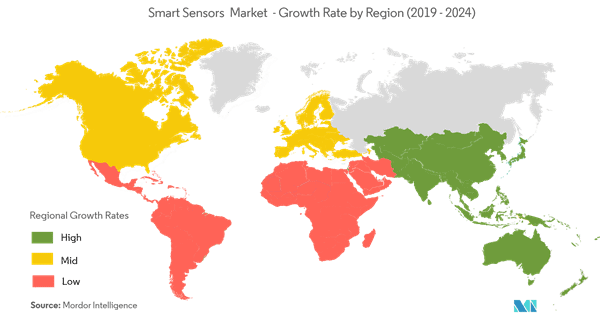
Source: Smart Sensors Market – Growth, Trends, and Forecast (2019 – 2024), Mordor Intelligence
ผลการวิเคราะห์ Deloitte ได้พยากรณ์ว่าตลาด Smart Sensor รวมกันทั่วโลกกำลังเติบโตที่ 19% ต่อปี คาดว่าจะพุ่งสูงถึง 60 พันล้านดอลลาร์ภายในปี 2022 เทคโนโลยีอันก้าวหน้าทำให้ขนาดของ Smart Sensor เล็กลง ใช้งานได้อย่างมีประสิทธิภาพมากขึ้น และมีต้นทุนการผลิตที่ต่ำลง ขีดความสามารถในการประมวลผล Smart Sensor ทำให้การประมวลและวิเคราะห์ข้อมูลที่ต้นทาง (Edge Computing) ปริมาณการรับส่งข้อมูลระหว่างอุปกรณ์มีปริมาณลดลง นอกจากนี้แล้วเทคโนโลยีระบบเครื่องกลไฟฟ้าจุลภาคหรือเมมส์ (Micro-Electromechanical Systems: MEMS) ส่งผลโดยรวมทำให้ Smart Sensor มีขนาดกระทัดรัดขึ้นแต่ทำงานได้หลากหลายขึ้นแม้ในบริเวณที่มีพื้นที่จำกัด
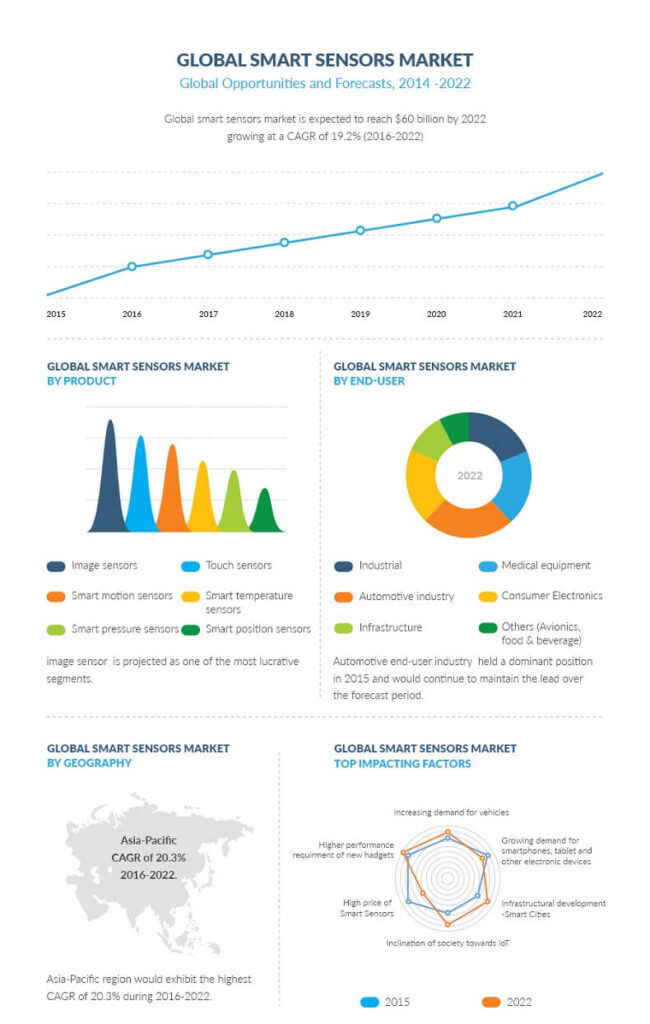
Source: Global Smart Sensors Market, Allied Market Research
SENSORS IN SUPPPLY CHAIN
นวัตกรรม อย่างเช่น หน่วยประมวลผลขนาดเล็กแบบฝัง และเซ็นเซอร์ชนิดย่อยสลายตามธรรมชาติได้ ได้ทำให้ตัว Smart Sensor มีความคล่องตัวในการประกอบธุรกิจ เทคโนโลยีสื่อสารไร้สายแบบใหม่ส่งผลให้เกิดรูปแบบการเชื่อมต่อระบบเครือขายที่หลากหลายซึ่งสามารถเพิ่มขยายและปรับแต่งได้ง่ายกว่าการเชื่อมต่อชนิดมีสายแบบเดิม เทคโนโลยีไร้สายแบบใหม่นี้ออกแบบมาเพื่อปริมาณข้อมูลขนาดใหญ่ที่ใช้ช่องสัญญาณขนาดใหญ่ขึ้น การใช้งานสมาร์ต ต้นทุนราคาของเครือข่ายสื่อสารแบบกว้างที่เน้นใช้พลังงานต่ำ (LPWAN) ก็ถูกลง ใช้พลังงานน้อยลง ครอบคลุมพื้นที่กว้างขวาง
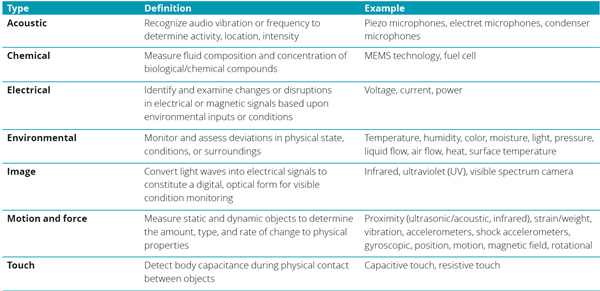
Source: Using Smart Sensors to Drive Supply Chain Innovation, Deloitte
บูรณาการ Smart Sensor เข้ากับระบบงานห่วงโซ่อุปทานสามารถลดต้นทุนการดำเนินงาน เพิ่มประสิทธิภาพในการวางแผน แถมยังให้ข้อมูลปบบ insight ของพฤติกรรมของผู้บริโภค ขณะนี้ระบบเครือข่ายการสื่อสารชนิดมีศูนย์กลางเพื่ออุปกรณ์ IoT กำลังพัฒนาอย่างต่อเนื่อง บริษัทต่างๆ ควรต้องพิจารณาความหลากหลายของ Smart Sensor ที่มีให้เลือกใช้ในท้องตลาด ให้เหมาะสมกับงานห่วงโซ่อุปทานของตนจากต้นน้ำสู่ปลายน้ำ
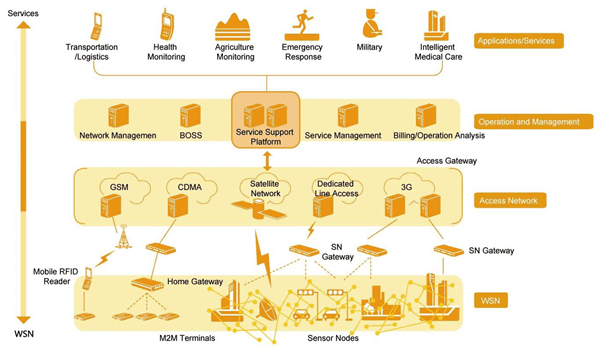
Source: ZTE
TAKE-HOME MESSAGE
เทคโนโลยี Smart Sensor นี้มีข้อดีหลายประการ ไม่ว่าจะเป็นขีดความสามารถ ความหลากหลายในการนำประยุกต์ใช้ในงานประเภทต่างๆ ในอุตสาหกรรมต่างๆ เช่น อุตสาหกรรมทางการแพทย์และสุขภาพ อุตสาหกรรมยานยนต์ อุตสาหกรรมอากาศยานและการป้องกันประเทศ อุตสาหกรรมระบบอัตโนมัติเพื่อการก่อสร้าง อุตสาหกรรมอุปกรณ์อิเล็กทรอนิกส์เพื่อผู้บริโภค และอุตสาหกรรมระบบอัตโนมัติเพื่องานอุตสาหกรรม อย่างไรก็ดี ปัจจัยเช่นการใช้เวลาติดตั้งที่ลดลง เม็ดเงินลงทุนในระบบพื้นฐาน ยังส่งผลยังยั้งการเติบโตของตลาด ผู้เล่นหลักในตลาดนี้ ได้แก่ Kionix, Inc., Sensonor AS, Smart Sensors, Inc., XYZ Interactive Technologies Inc., SmarThings, Inc. และ Knowles ไม่ว่าผู้เล่นรายใหญ่นี้จะเป็นใครก็ตาม ผู้ใดที่มีกลยุทธ์เหนือกว่าจะเป็นผู้คว้าชัยชนะไป
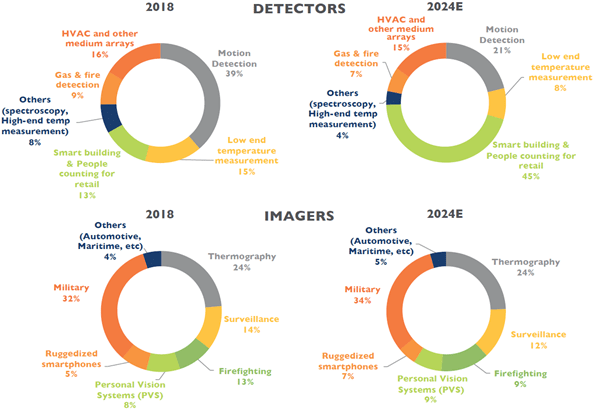
Source: Uncooled Infrared Imagers and Detectors report, Yole Developpement



















